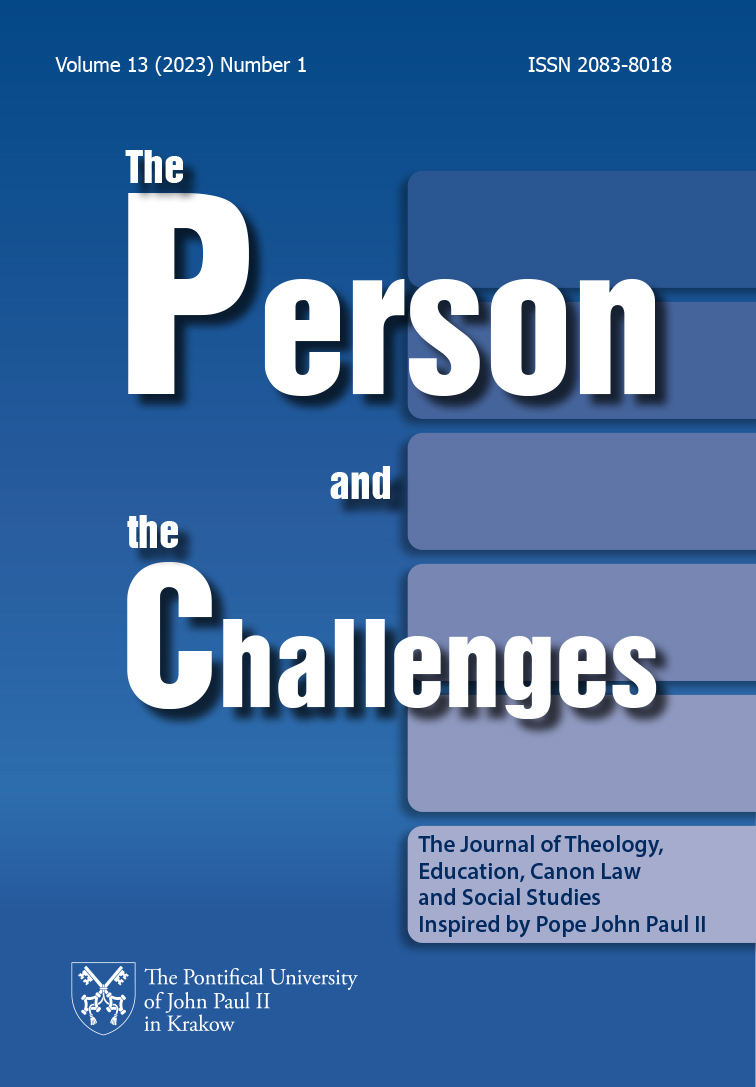Anthropological Aspects of the Theology of Marriage and the Family in the Light of the Insights of Saint John Paul II
DOI:
https://doi.org/10.15633/pch.13101Keywords:
Theology of Marriage and Family, Christian Anthropology of Gender, Marital Love, Meaning and Mission of MarriageAbstract
The article analyses the anthropology of the theology of marriage and the family, presents the foundations of the Christian anthropology of gender, describes the concept of marital love, and introduces the foundations of the theology of indissolubility of marriage and the meaning and mission of marriage using philosophical and theological scientific literature, the writings of John Paul II, the Holy Scripture and the documents of the Magisterium of the Catholic Church. The following lines of further research are anticipated: the family as a small domestic church, the principles of the religious education of children in the family, and the family as a place of vocational disclosure. The conclusions of this theoretical study are presented.
References
Catholic Church, Catechism of the Catholic Church, 2003, https://www.vatican.va/archive/ENG0015/__P51.HTM (31.01.2022).
Catholic Church, Code of Canon Law., Latin-English Edition. Washington, D.C. CanonLaw Society of America, 1984.
DeMarco D., Wiker B., Architects Of The Culture Of Death. San Francisco: Ignatius Press. 2004, http://www.ignatiusinsight.com/features/contents_archdeathjuly04. asp (31.01.2022).
Holy See., Charter of the Rights of the Family, 1983, https://www.vatican.va/roman_curia/pontifical_councils/family/documents/rc_pc_family_doc_19831022_familyrights_en.html (22.01.2022).
John Paul II., Apostolic Exhortation Familiaris consortio. To The Episcopate to the Clergy and to the Faithful of the Whole Catholic Church on the Role of the Christian Family in the Modern World, 1981, https://www.vatican.va/content/john-paul-ii/en/apost_exhortations/documents/hf_jp-ii_exh_19811122_familiaris-consortio.html (04.01.2022).
John Paul II., Encyclical Letter Evangelium Vitae. To the Bishops, Priests and Deacons, Men and Women religious lay Faithful and all People of Good Will on the Value and Inviolability of Human Life, 1995, https://www.vatican.va/content/john-paul-ii/en/encyclicals/documents/hf_jp-ii_enc_25031995_evangelium-vitae.html (03.01.2022).
John Paul II., Letter to Families Gratissimam sane, 1994, https://www.vatican.va/content/john-paul-ii/en/letters/1994/documents/hf_jp-ii_let_02021994_families.html (20.01.2022).
Joyce A. M. and etc., Births: Final Data for 2019. National Vital Statistics Reports, March 2021, volume 70, Number 2, https://www.cdc.gov/nchs/data/nvsr/nvsr70/nvsr70-02-508.pdf (31.01.2022).
The New American Bible, 2002, https://www.vatican.va/archive/ENG0839/_INDEX.HTM (21.01.2022).
The Pontifical Council for the Family, The Truth and Meaning of Human Sexuality. Guidelines for Education within the Family, 2000, https://www.vatican.va/roman_curia/pontifical_councils/family/documents/rc_pc_family_doc_08121995_humansexuality_en.html (21.01.2022).
Vatican Council II., Dogmatic Constitution on the Church Lumen gentium, 1964, https://www.vatican.va/archive/hist_councils/ii_vatican_council/documents/vatii_const_19641121_lumen-gentium_en.html (11.01.2022).
Vatican Council II., Gaudium et spes (Pastoral Constitution on the Church in the Modern World), 1964, https://www.vatican.va/archive/hist_councils/ii_vatican_council/documents/vat-ii_const_19651207_gaudium-et-spes_en.html (11.01.2022).
Downloads
Published
Issue
Section
License

This work is licensed under a Creative Commons Attribution 4.0 International License.
Authors who publish with this journal agree to the following terms:
- Authors retain the copyright and full publishing rights without restrictions, and grant the journal right of first publication with the work simultaneously licensed under a Creative Commons Attribution 4.0 International License that allows others to share the work with an acknowledgement of the work's authorship and initial publication in this journal.
- Authors are able to enter into separate, additional contractual arrangements for the non-exclusive distribution of the journal's published version of the work (e.g., post it to an institutional repository or publish it in a book), with an acknowledgement of its initial publication in this journal.
- Authors are permitted and encouraged to post their work online (e.g., in institutional repositories or on their website) prior to and during the submission process, as it can lead to productive exchanges, as well as earlier and greater citation of published work (See The Effect of Open Access).

